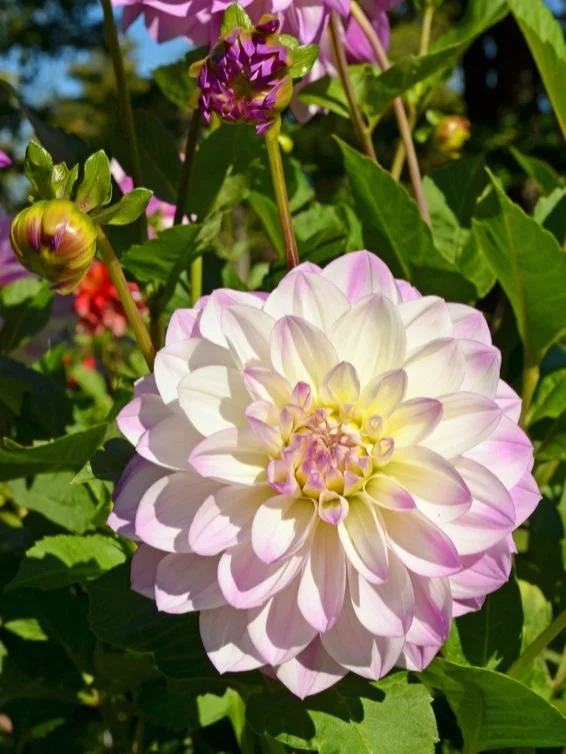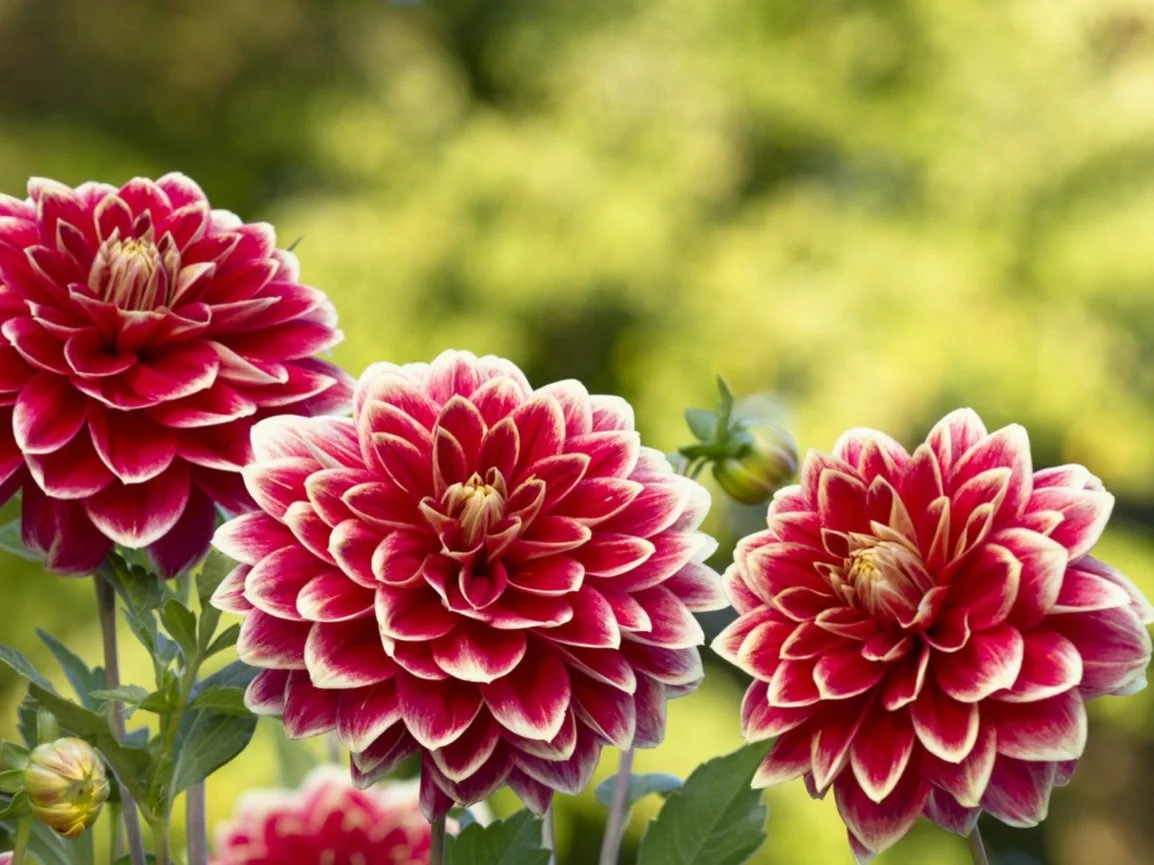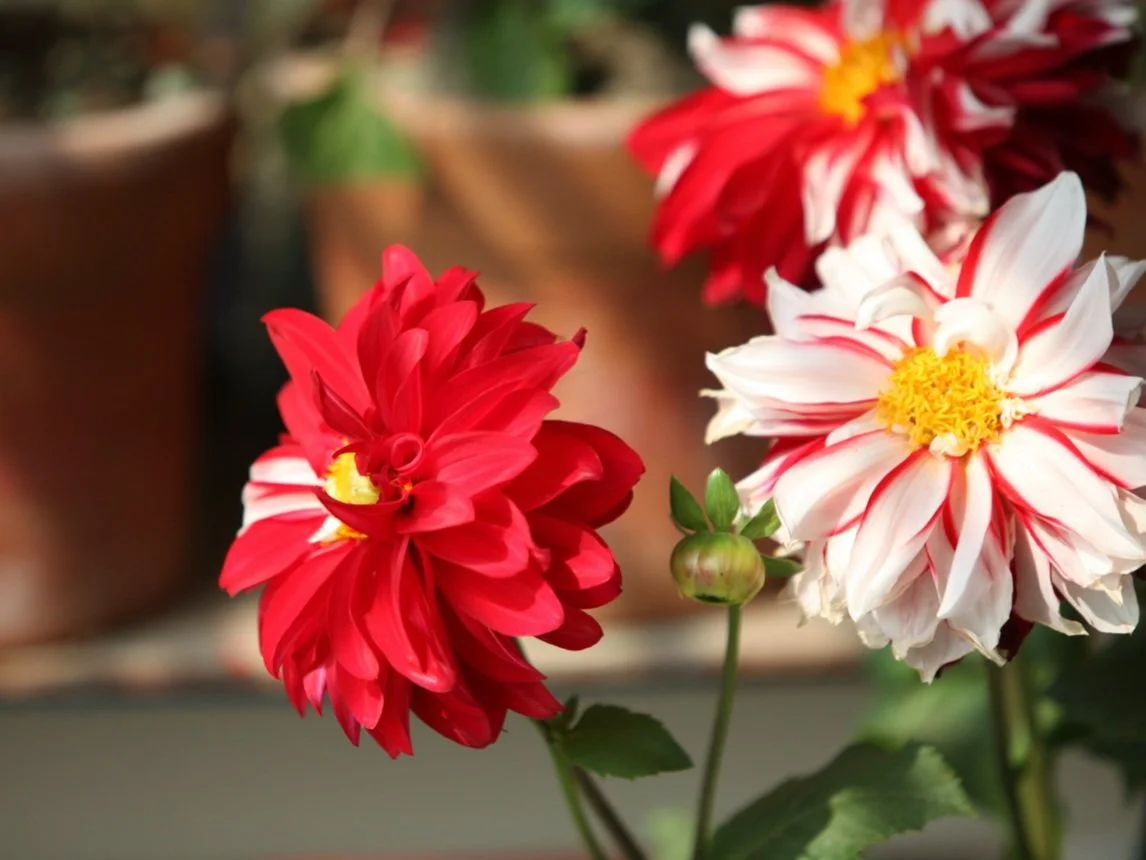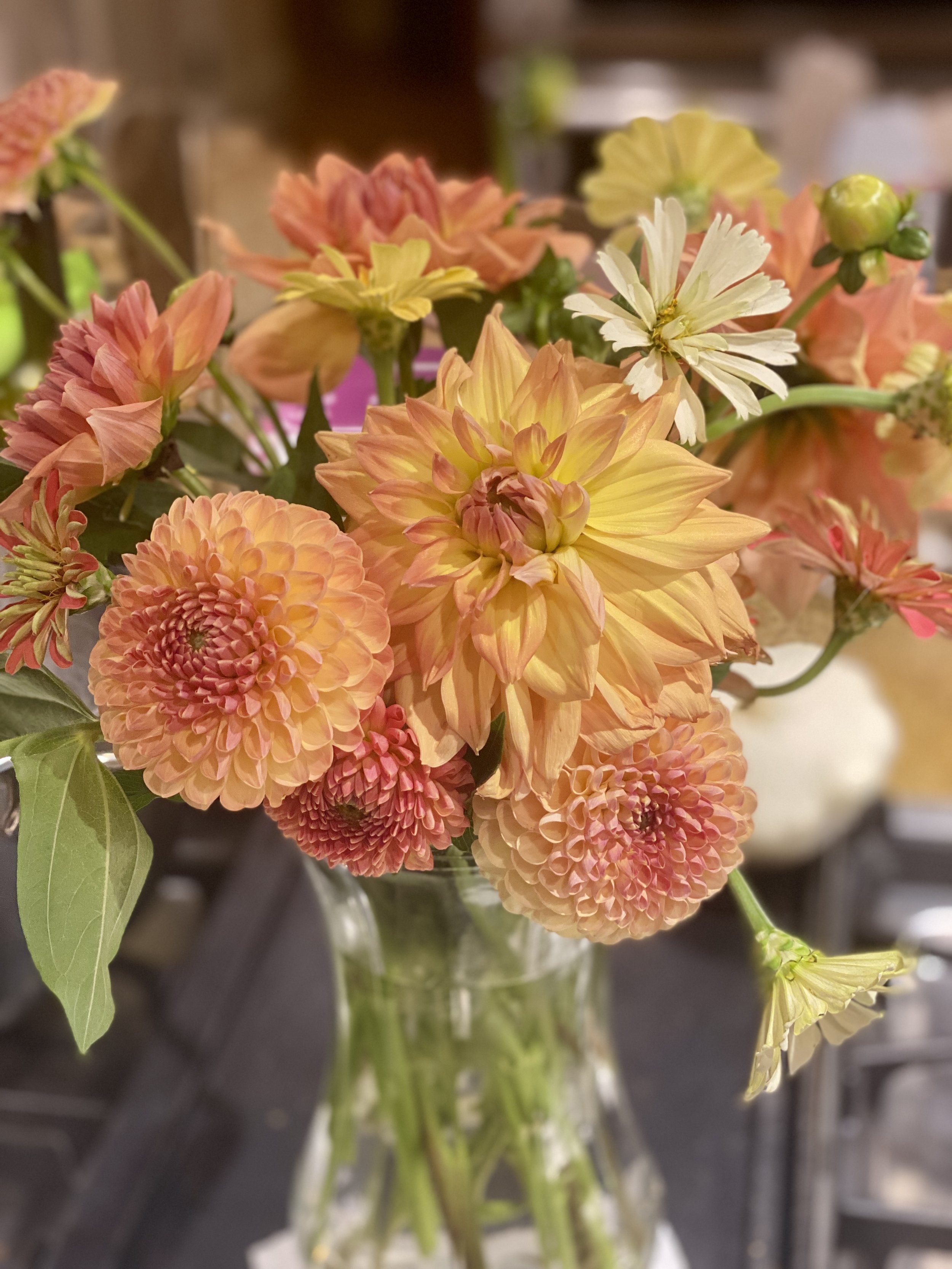Growing Dahlias in Your Kitchen Garden
Dahlias are one of those flowers that just make me smile. They bloom from about mid-summer to mid-to-late fall, and come in so many gorgeous colors, shapes and sizes it’s enough to make you swoon! Did you know that every color except true blue can be grown in Georgia?
Even though growing Dahlias can be challenging and very location dependent, having them in my kitchen garden is something I look forward to each year. Where I live is in the Piedmont region of Georgia. While Dahlias do really well in the north Georgia mountains, they also can be grown in my area of the state (which makes me super happy).
Dahlias do need a little babying, however, in order to look their best. They require full sun (at least 8 hours each day), need staking and diligent insect monitoring. Additionally, Dahlias are super sensitive to the cold. Tubers should only be planted once the soil has warmed up and all chances of frost have passed. In this area, that means planting occurs around mid to late May - maybe even early June.
Tubers usually are available for purchase in late winter and early spring. It’s best if tubers are bought directly from Dahlia suppliers instead general nurseries. And be sure to choose named varieties instead of tubers identified just by color. Dahlias need well-draining soil that holds in moisture and provides really good aeration - Dahlias hate standing in water!
Plant Dahlia tubers horizontally, 4 to 6 inches deep and about 18 inches apart with the eye facing up. Add in 3 to 4 inches of compost and mix in a good general organic fertilizer (you’ll then need to fertilize once a month during the growing season). Dahlias are susceptible to slugs, snails and earwigs, so sprinkle Sluggo Plus once planting is done, then every 10 to 14 days throughout the growing season. If you need to spray for general insects, Bonide Neem Oil is always a good choice.
You won’t water until you see the first green shoots poking up through the dirt - watering before this point may bead to tuber rot. Once you start watering, drip irrigation is definitely the way to go. Dahlias need deep watering several times a week (maybe more if it’s really hot) to get the most beautiful blooms. Don’t skimp on the water!
When the plants get about a foot tall, pinch them back by taking off about 3 to 4 inches from the center of the plant. This will encourage branching and help increase flower production.
Dahlia plants can get pretty tall, and their stems are hollow, so they require staking to keep from falling over. I’ve learned that installing the stakes at planting time works better than waiting and staking later in the season. I’ve also learned that you’re going to need some pretty heavy-duty stakes - and the stakes need to be pounded into the ground beneath your raised garden beds or they won’t be strong enough to support your Dahlias.
My first year growing Dahlias, I planted them in raised garden beds that were 2 feet deep. I added stakes when the plants were about 3 feet tall, and continued to tie the plants to the stakes as the Dahlias grew. It was a disaster - most of my Dahlias were 6 to 8 feet tall and towered over the top of the raised garden beds. Not only could I not reach the tops of the plants, they were so heavy that they pulled the stakes out and completely toppled over.
The next year, I reduced the depth of the raised garden beds by a foot - now they’re only 1 foot deep instead of 2 feet deep. I installed heavy-duty metal coated stakes when I planted the tubers, and pounded those stakes into the ground beneath the raised garden beds. Success! Not only can I reach the tops of my Dahlia plants, but the stakes held and the plants didn’t fall over.
Dahlias make gorgeous cut flowers - whether by themselves or combined with other cut flowers like Zinnias. Plan to cut your Dahlias early in the morning when temperatures are still a little cool (if there is such a thing in late summer - LOL). Dahlias don’t really open much after you cut them, so when you’re picking out Dahlias to cut, look for blooms that are almost all the way open. Check the backs of the Dahlia heads and choose the ones where the petals look new and fresh. If the petals look thin and papery and/or dry, that means the bloom is past its prime and won’t last very long in a vase.
After cutting your Dahlias, give them a hot water bath. Place cut Dahlias in water that is between 160 and 180 degrees (which is really hot) - Just to give you an idea, water boils at 212 degrees. Let the blooms cool for at least an hour. Then fill a large vase with fresh water and add a floral preservative. Transfer the cut Dahlia blooms from the cooled hot water bath to the vase. These steps will help prolong the Dahlia blooms. Cut Dahlias usually will last about 5 or 6 days.
To learn more about including cut flowers in your kitchen garden, sign up for the Kitchenairy Gardens email list. And be sure to follow me on Instagram and Facebook (@kitchenairygardens) and on Pinterest (@kissmygardenish).










